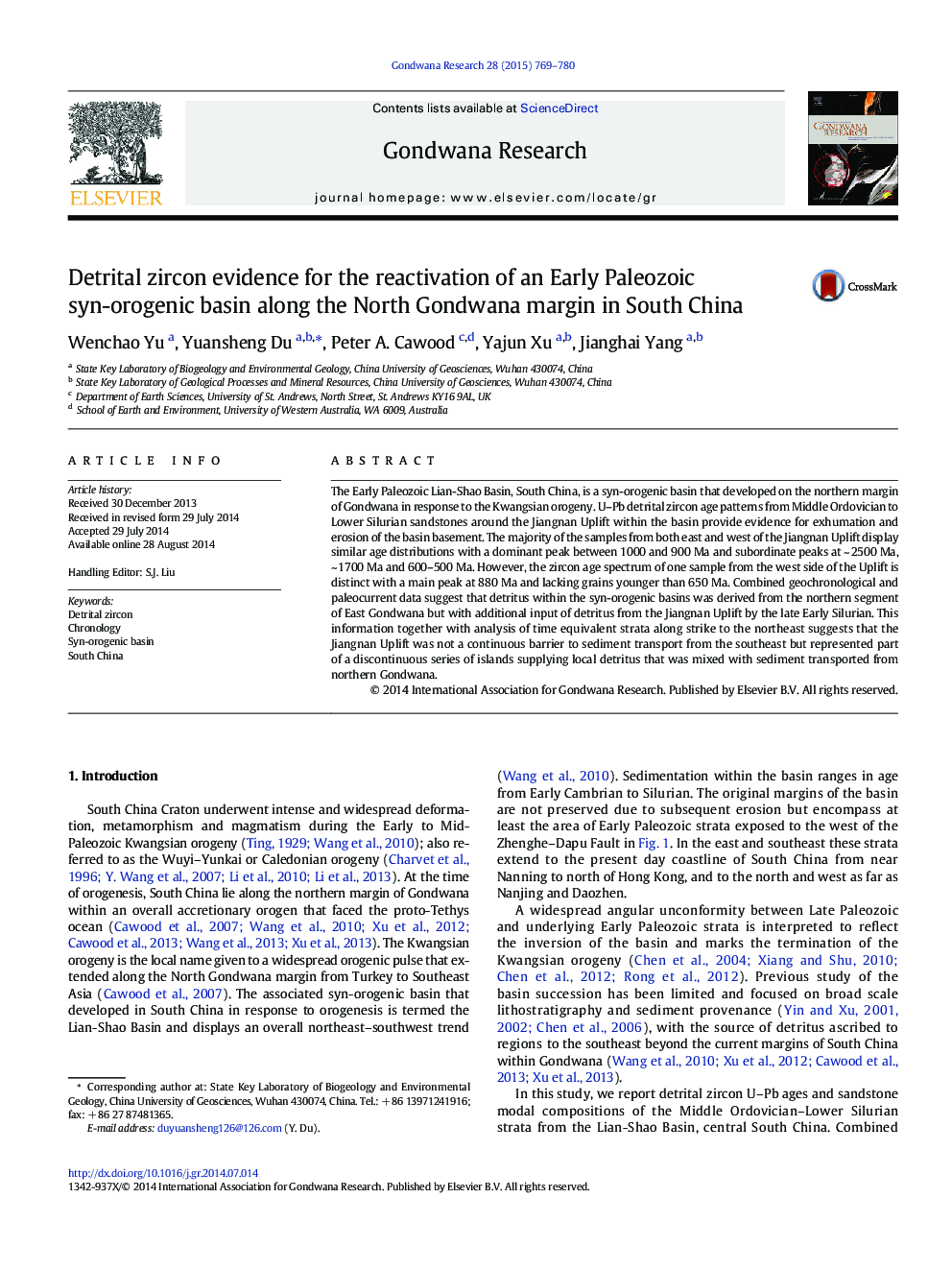| Article ID | Journal | Published Year | Pages | File Type |
|---|---|---|---|---|
| 4726888 | Gondwana Research | 2015 | 12 Pages |
•Lian-Shao Basin, South China, is an Early Paleozoic syn-orogenic basin.•Northern East Gondwana dominated the provenance of the Early Silurian sediments.•Jiangnan Uplift and Wuyi Uplift within the basin also provided detritus.
The Early Paleozoic Lian-Shao Basin, South China, is a syn-orogenic basin that developed on the northern margin of Gondwana in response to the Kwangsian orogeny. U–Pb detrital zircon age patterns from Middle Ordovician to Lower Silurian sandstones around the Jiangnan Uplift within the basin provide evidence for exhumation and erosion of the basin basement. The majority of the samples from both east and west of the Jiangnan Uplift display similar age distributions with a dominant peak between 1000 and 900 Ma and subordinate peaks at ~ 2500 Ma, ~ 1700 Ma and 600–500 Ma. However, the zircon age spectrum of one sample from the west side of the Uplift is distinct with a main peak at 880 Ma and lacking grains younger than 650 Ma. Combined geochronological and paleocurrent data suggest that detritus within the syn-orogenic basins was derived from the northern segment of East Gondwana but with additional input of detritus from the Jiangnan Uplift by the late Early Silurian. This information together with analysis of time equivalent strata along strike to the northeast suggests that the Jiangnan Uplift was not a continuous barrier to sediment transport from the southeast but represented part of a discontinuous series of islands supplying local detritus that was mixed with sediment transported from northern Gondwana.
Graphical abstractFigure optionsDownload full-size imageDownload as PowerPoint slide
